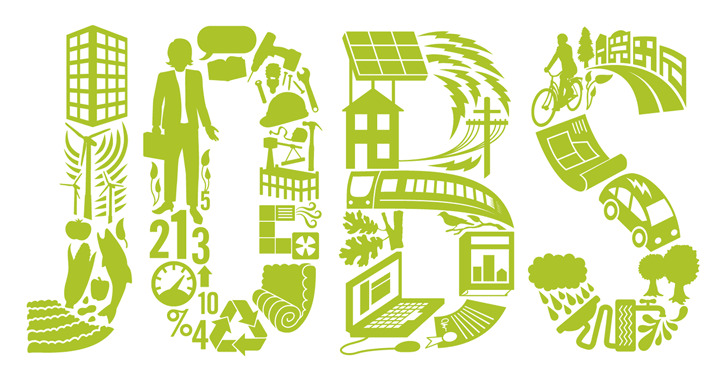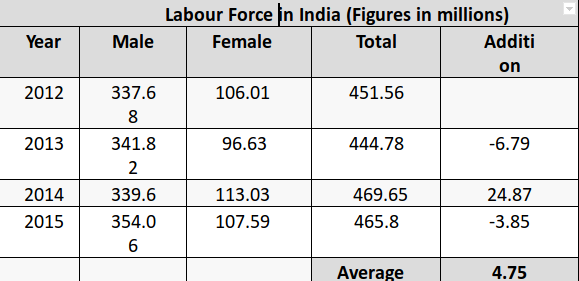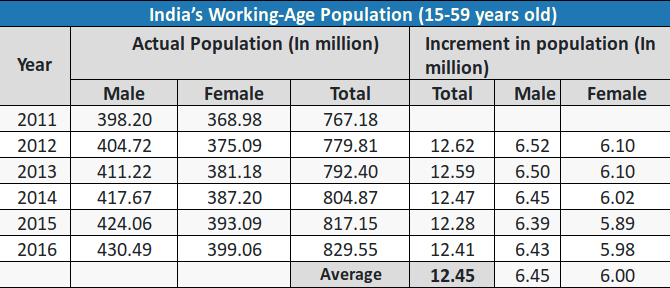SCCN Blogs
The Shift to Green Economy
Why action is needed?
"A job which is not green is not decent". Climate change is one of the defining challenges of our time which is a cross-cutting development issue that affects every aspect of sustainable development. The effects of climate change worsen the existing economic, political and humanitarian struggles and affect human development. Such effects include a slow, incremental and cumulative degradation of the environment and an increase in extreme weather events. They are particularly evident in climate-dependent activities like agriculture and tourism, where adaptation and mitigation strategies involve significant costs for both the private and public sectors.
Young women and men are particularly vulnerable to the impact of climate change on the world of work. The majority of the world's 1.2 billion young people aged 15 to 24 live in developing countries (126 countries). More than 160 million youth are working but living in poverty. Those young women and men are to a large extent employed in those sectors which are threatened by the overuse of natural resources and climate change, such as agriculture, forestry and fisheries. The overuse of natural resources and accelerated climate change can lead to massive losses in both rural and urban enterprises and labour markets.
Climate change and the youth employment crisis are closely linked. In fact, they must be addressed together to realize a just transition to a low-carbon, environmentally and socially sustainable economy that leads to more and better work opportunities. The "green economy" is a promising way forward – an economy that results in improved human well-being and social equity while significantly reducing environmental risks and ecological scarcities, and that aims for sustainable development without degrading the environment.
Greening the economy does not automatically translate into decent jobs for young people. With coherent planning and policy frameworks, green economies can be designed to benefit women and men over time, while increasing access to economic opportunities in ways that reduce inequalities and promote social well-being. However, young people may face substantial challenges in gaining access to economic and employment opportunities in the green economy. Sectors such as energy, industry and infrastructure often require certain levels of education and skills that may not be readily accessible to young people. On the other hand, labour-intensive sectors such as agriculture and construction, which are relatively easy for young people to enter have become unattractive to them, largely due to the negative perceptions of them as unprofitable.
How and what are the innovative approaches to green jobs for young people?
Coordinated action is needed for green economies to create more and better employment opportunities for young women and men. The transition to the green economy can generate up to 60 million additional jobs globally by 2030. In particular, policies and investments in economic activities such as renewable energy generation or organic agriculture have proven to hold strong potential for future job creation.
While youth unemployment rates are generally lower in rural areas than in urban ones, poverty among young workers is a major global concern. So we shouldn't focus just on the quantity of jobs but also on the quality. We need structural and institutional changes towards a green economy, but it requires more time and cost. So instead of creating new policies, structures etc. for green economies, we need to bring a change in the present models by adding the green or environmental aspect to them.
Suggested Actions:
Skill development for people with less or no education: Skill development workshops could be conducted after which the youth should be provided with opportunities for jobs or self-employment or entrepreneurship. There needs to be a system to connect the young people who are equipped with skills (through skill-development workshops) with the employers or companies.
Focus on greening the agriculture sector - India ranks second worldwide in farm outputs. As per 2018, Agriculture employed 50% of the Indian work force and contributed 17-18% to country's GDP. So, some of the initiatives to green this sector could be:
- Modernizing existing agricultural curricula by introducing new technologies (such as vertical farming, using soil, weather and other sensors; and increased consideration of sustainability and organic agriculture - educating and training people working in the sector to use the technology. This could include skills gap surveys which should be conducted to understand what specific skill sets employers in the green economy demand, but young women and men typically lack. Then skill-development workshops could be organized, and these trained people could be connected with the employers
- Introducing gender-sensitive training approaches for young people especially in rural areas, focusing not only on agriculture in the strictest sense, but on "sustainable socio-economic entrepreneurship" and empowerment
- In places where production is scattered and in remote areas, improving coordination between producers and buyers by establishing appropriate collection points and schedules where market information can also be exchanged (price, consumer preferences, best practices, etc.). Digital technology could also be used here - by providing training to local farmers to use mobile phones to link with buyers through apps or websites.
More focus should be put on quality apprenticeship - Incentives could be provided to employers who encourage quality apprenticeship to youth. Also, private sectors should be encouraged to INVEST in young workers' professional development and to create entry level jobs. They need to allow youth the space to develop those skills in their companies instead of demanding that young people develop the skills it needs for the future. So, sessions could be conducted for heads of private sectors to promote this. Also, cooperation should be strengthened with national education agencies to develop and implement a plan for integrating green skills into schools or apprenticeship programmes. Simultaneously national certification schemes should be strengthened to ensure conformity with training programmes.
Involve youth in the design, implementation, monitoring and evaluation of all policies tackling youth unemployment. There needs to be a medium (organization or platform) through which the youth can be connected with the policy making bodies of the government. Also, at a national level a mandatory framework could be established to make the supply chains greener.
- Example: India has pledged to ensure 30 per cent of all vehicles on the road are electric by 2030, but with 60-70 per cent coal-based power generation, India is not a favorable destination for electric vehicles, at least in the medium to large vehicle categories. A well-cited paper (Hawkins et al, Journal of Industrial Ecology) reports thadt electric vehicles production is two times more polluting than those of IC engine vehicles in India. The emissions due to manufacturing of electricity from coal are more than the emissions from petrol or diesel vehicles (especially large vehicles). So, involving youth in such major decision-making bodies might help in new innovations, solutions and in gaining new perspectives.
In a sum, the existing industries and markets should include the environmental or green aspect. The future of work is strongly linked to sustainable development and will impact many dimensions of life in and beyond employment. Moreover, it will affect all members of society including those who work, those who cannot work, and those who are unable to find work. Governments and other stakeholders must work together now to explore and address these challenges to ensure a future labour market that is both sustainable and inclusive. To address the mega trends and challenges influencing the world of work (e.g. digitization & automation, ageing population; globalization/business re-organization), new structures need to be created. The objective should be to connect and reinforce different projects that are able to drive and inspire people-centered work environments enabling employability and inclusive labour markets.
Linking unemployment and green jobs in India
Calculations are based on labour Bureau of India estimates
Calculations are based on UN Population Division estimates..
When you subscribe to the blog, we will send you an e-mail when there are new updates on the site so you wouldn't miss them.







Comments